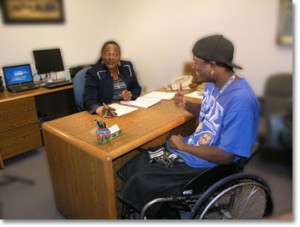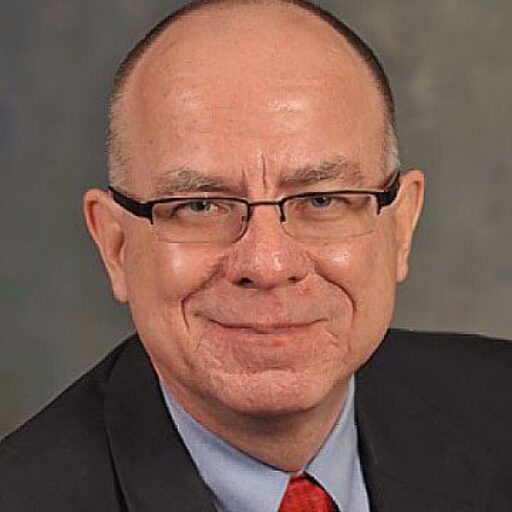Achieving the Best Client to Staff Ratio
What is the best client/staff ratio for a rescue mission program?
 As I have interacted with rescue missions in a speaking and consulting role over the years, this is one of the questions I am asked most often. It is certainly one of the most important questions as well. Most rescue mission administrators work diligently to make every donated dollar stretch as far as possible. Truth is, staff salaries make up the most substantial portion of their budgets. So they need to know these funds are being spent wisely. Front-line staff members can feel overwhelmed by many the unmet needs they see around them every day, knowing that a few more qualified people could aka big difference.
As I have interacted with rescue missions in a speaking and consulting role over the years, this is one of the questions I am asked most often. It is certainly one of the most important questions as well. Most rescue mission administrators work diligently to make every donated dollar stretch as far as possible. Truth is, staff salaries make up the most substantial portion of their budgets. So they need to know these funds are being spent wisely. Front-line staff members can feel overwhelmed by many the unmet needs they see around them every day, knowing that a few more qualified people could aka big difference.
So, I would like to take a few moments to set forth a few simple principles that may help answer this question.
A. Know what you want to accomplish — An emergency shelter with minimal counseling and scheduled program activities needs a few basic supervisor staff members. A residential program that focuses on helping participants achieve life-term change by overcoming addictions and deeper inner problems will require much more staff attention. Sorting through exactly what outcomes you are striving for will not only help to determine how many staff members are needed. Additionally, it will also help in deciding what type of staff people are needed. Maybe the type of programs called for social workers and certified additions counselors instead of individuals just finishing Bible School.
B. Troubled people need lots of attention – Real and lasting life-change is not something that happens all on its own. I believe with all my heart only God can produce lasting change in the lives of wounded people. Yet, I also believe that He does it through people who serve as His representatives to the hurting. Especially in the first year or so of sobriety, He uses us to help people in recovery to understand the basics of the Christian life and begin the process of life-long growth. One-on-one counseling time, group sessions, classes, and corporate times of worship and praise are all ways that God’s Spirit can reach into their lives to bring healing and the power to overcome their problems. At some rescue mission, many of these activities are outsourced to community agencies and resources. Other have found qualified volunteers to help with them. But, in more cases, it takes people who are on the payroll to conduct meetings, to teach, and to counsel.
C. Achieving real, lasting change, is a lot of work – Troubled people need lots of time to learn, to talk, and sort out the issues of their lives. This can cause a bit of tension, though, because rescue missions tend to depend on residential program participants to keep their operations running. Some have even had their program people working full-time in these activities 8-10 hours a day, while offering just a few evening activities. When this is the case, I have to ask “Is the mission there for the client or the client there for the mission? “
I am pleased to say that this is not as common a situation today as it once was. Most rescue missions have come to recognize that today’s homeless clients need much more help than those who sought out their services a even a decade ago. Most are truly looking out for the client’s best interests. Still, for most of them, it may be time to consider actually hiring outside people to do some of the tasks traditionally done by clients. If a program has been experiencing less than hoped for client success, this step may allow people in their programs to have extra time to do the hard work of early recovery.
D. Troubled people need individual attention — One simple “rule of thumb” that indicates when a program is understaffed is this: does every participant have at least an hour each week in a one-on-one counseling session with a qualified staff member? If this is not happening, it may be better to have a smaller program than to have a building full of people whose lives are barely being impacted.
Every person in a long-term program needs to have one staff member who serves as their primary counselor and advocate. The next question that follows, of course is, “how many clients can one staff person handle?” A 1:14 ratio is common in most secular treatment programs. Additionally, I see and example in our Lord Jesus. He know He had three short years to invest in the lives of just a few people in whose care He would leave the future of the Church. He chose twelve. Could that number be significant? Someone once pointed out to me that Jesus wasn’t doing case management – and these were pretty stable people to being with. But, I think the point in all this is that we need to be realistic in how many troubled people one staff member can work with at any one time.
In conclusion, I think it is very important for us to remember the needs of the people who come the rescue mission. Giving them the time and the attention they need to more from homelessness and defeat to a stable, Christian life ought to be our primary goal. Whether it means paring back on bed space or increasing the staff budget, the outcome will surely be more lives permanently changed to the glory of God.



